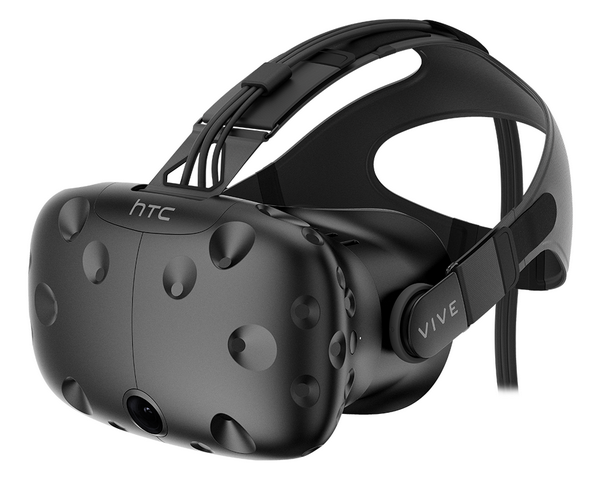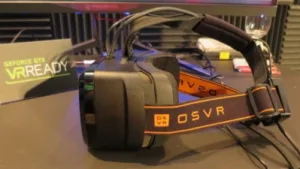At the Next@Acer press conference on April 21 (See related article in this issue), Virtual Reality (VR) headsets from four different suppliers were on display. These were all dedicated VR headsets, not systems based on smartphones with companion optical systems. Systems on display included the Oculus Rift headset from Oculus, Open Source Virtual Reality’s OSVR headset, HTC’s Vive and Starbreeze Studios Star VR headset.
Acer’s interest in these headsets was to prove its new Predator series gaming computers could drive a variety of VR headsets that required a range of input video formats. As expected, I can report that all four headsets worked well with the Predator gaming computers.
One of the goals of the VR area at the Acer demonstration area was to show not just that they worked but also that the newly introduced Predator G1 gaming desktop computer and the Predator 17X laptop computer with their advanced Nvidia GPUs can do a better job of supporting VR headsets than computers with previous GPUs.
 Matt Brennesholtz fighting aliens with the help of the Oculus Rift HMD
Matt Brennesholtz fighting aliens with the help of the Oculus Rift HMD
 HTC Vive VR HMD
HTC Vive VR HMD
 OSVR VR HMD in the Next@Acer gaming area
OSVR VR HMD in the Next@Acer gaming area
One of the major artifacts in VR comes when you move your head around, say to look from the wall to the ceiling of your virtual environment, and the host computer can’t render this rapidly changing image fast enough to keep up with your head motion. The motion looks jerky and is shown in annoying temporal steps in all VR systems I’ve ever seen. This problem is not related to motion in the image, it occurs in still images as well. It is also not primarily a headset problem, modern headsets can be trusted to display the images rendered by the host computer. The solution to this problem is brute force graphics processing power in the host computer. While no smartphone-based VR systems such as Google Cardboard were on display at Next@Acer, they have this problem and it is a very, very serious problem indeed. Smartphones simply don’t have the brute force graphics power needed to make the image motion that goes with head motion appear smooth.
As part of this Acer demo, they had three sources driving VR headsets: a standard laptop with standard graphics processing, The Predator 17X gaming laptop with a Nvidia GTX 980 graphics chip and the Predator G1 gaming desktop with a Nvidia GeForce GTX graphics card.
With the laptop graphics, this artifact was bad, but not as bad as I remember it to be in smartphone based VR systems. With the Predator 17X, The artifact was significantly reduced compared to the conventional laptop, but was still easily noticeable. With the Predator G1, there was further improvement, even though the artifact was still visible. Since this is primarily a host graphics processing issue, the fact that three different headsets were driven by the three different hosts does not significantly invalidate this comparison.
In terms of the image quality of the four headsets, I would rate the Oculus VR, the OSVR headset and the HTC Vive as roughly equal and all much better than smartphone-based VR systems. Since Acer was using the headset to show different types of content from different computer sources, it is harder to be any more specific than that. The main difference between these three headsets was in convenience and comfort features. For example, none of the three could comfortably accommodate glasses, but some of them could not accommodate glasses at all, comfortable or uncomfortable. For a VR user who doesn’t wear glasses, this is a non-issue. Another convenience feature was built in headphones vs external headphones. Again, the choice is dependent on the individual and whether he prefers (or owns) high quality headphones.
The Starbreeze StarVR headset had noticeably better image quality than the other three sets, primarily due to its higher pixel count and wider field of view. The StarVR headset is discussed in detail in a separate article. (Starbreeze Shows StarVR Headset) –Matthew Brennesholtz

